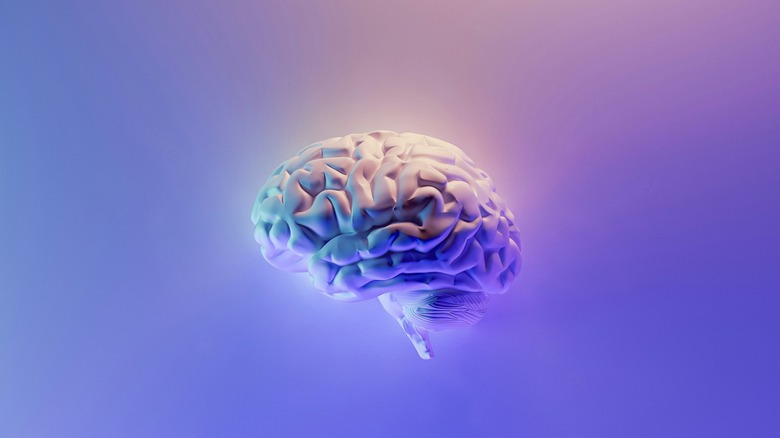If You Thought Your Brain Was The Only Place To Store Memories, You'd Be Dead Wrong
We often think of our brains as the computational centers controlling our physical bodies, where everything about our conscious (and unconscious) lives gets processed and stored. Neurons are at the center of this incredible biological machinery, and they're involved in everything from how your brain processes food to regulating all types of body systems and their functions.
Making, storing, and recalling memories, for example, are functions that have long been considered the exclusive realm of the brain. It's not an accident that we think this way. For decades, neuroscientists have understood memory as a complex neurological process involving synaptic connections and structures in the brain, like the hippocampus. Put simply, the brain is the control center that moves the physical, unthinking body — and there's a clear border between the two.
But what if the brain and the body aren't as distinct as we thought? What if memory is not confined to just the brain's neural circuitry? These are the questions that new research from scientists at New York University are beginning to shed light on, revealing why the fundamental assumptions that underpin how we think about memory and the body might be all wrong.
How (we think) memory works
Different types of memories — from emotional experiences to factual knowledge — are stored in various regions of the brain, with neurons communicating through electrical and chemical signals. This process involves key molecular players like the CREB protein, which helps transform short-term experiences into long-lasting memories. This process occurs in the regions of the brain known for memory storage. But a pioneering study from New York University researchers has revealed that every cell in the body has the potential to remember, learn, and adapt.
"Learning and memory are generally associated with brains and brain cells alone, but our study shows that other cells in the body can learn and form memories, too," Nikolay Kukushkin, lead author of the study, said in a statement to New York University.
To conduct the experiment, Kukushkin and the paper's co-authors developed a clever system to test memory formation in non-brain cells. Engineering two different human cell lines — one from neuroblastoma (nerve cells) and another from kidney tissue — the researchers exposed the cells to differing chemical signal patterns, similar to how brain cells are exposed to neurotransmitter patterns when they encounter new information. This caused the cells to produce a glowing protein when a memory-associated gene was activated, allowing scientists to see when a kind of "learning" was occurring.
Rethinking cellular intelligence
The experiment hinged on the well-known "spacing effect," a learning principle that describes how information is better retained when learned in repeated, distributed sessions, rather than in a single, intense burst. The researchers applied chemical signals to the non-brain cells in timed pulses. What they saw was that these cells could distinguish between different patterns and, shockingly, that the pulsed stimulation activated their memory-associated genes.
This research doesn't just challenge our understanding of memory, it opens up new frontiers of scientific exploration. If cells throughout the body can "remember" and "learn," what does that mean for our health and understanding of the biological processes that make up an individual? Lead researcher Nikolay Kukushkin suggests that, when it comes to memory, we might need to treat our bodies as not all that fundamentally different from the brain.
"[We could] consider what our pancreas remembers about the pattern of our past meals to maintain healthy levels of blood glucose or consider what a cancer cell remembers about the pattern of chemotherapy," Kukushkin said in his New York University statement. The study is a reminder that boundary-pushing experiments, like those in embryonic stem cell research, are crucial to gaining a better understanding of how our bodies and brains work together.


